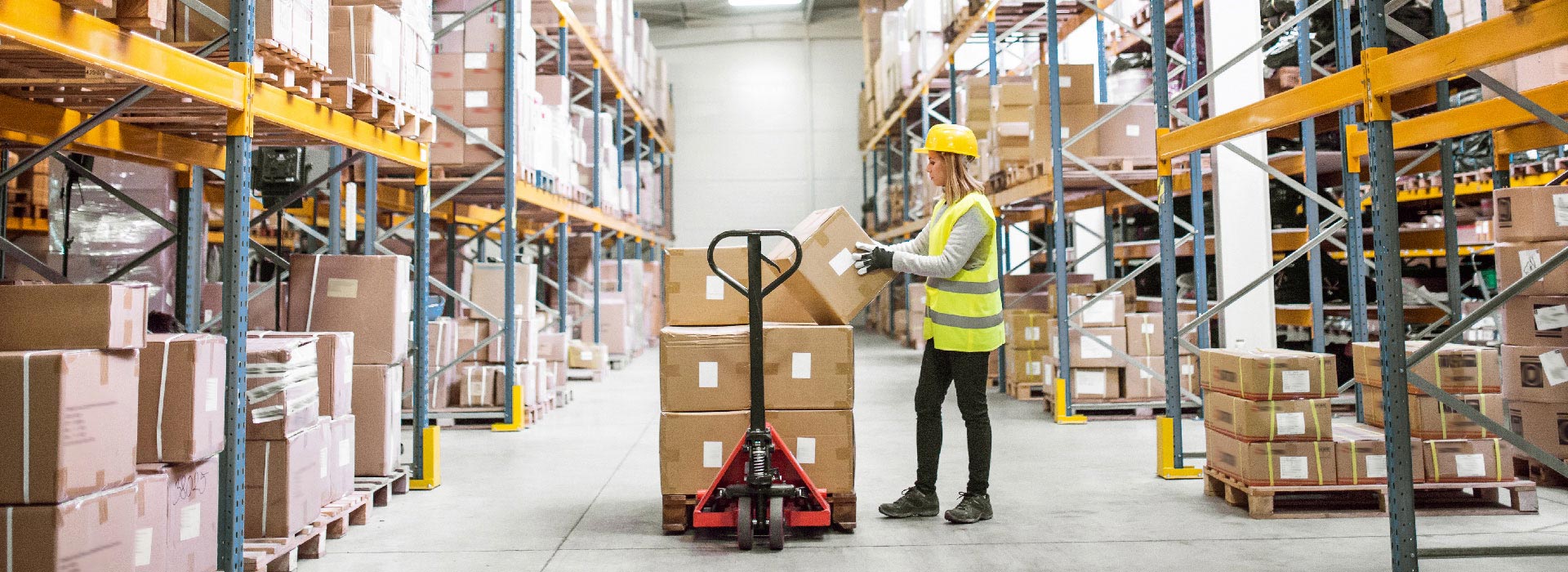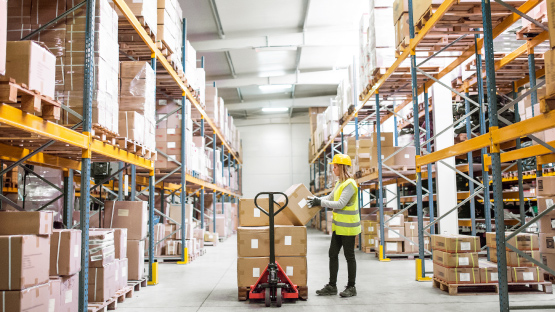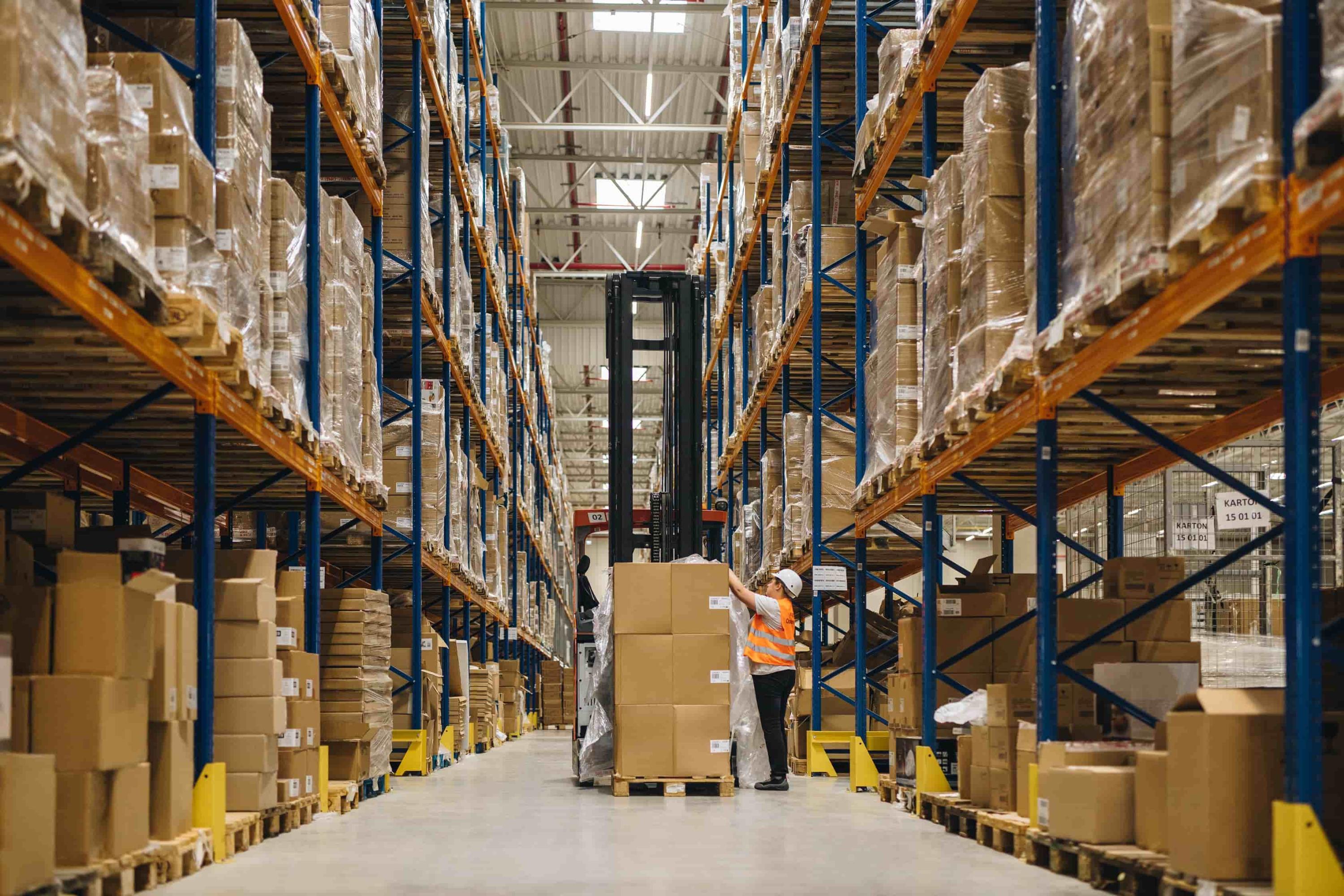Cost risks in e-commerce - how to optimise warehouse handling?
Fulfillment

21 February 2024
Running your own warehouse means costs piling up for the entrepreneur, mainly related to renting space and maintaining employees. It is also associated with difficulties in scaling the business, when the warehouse space available blocks the development of the assortment and increasing the volume of shipments. E-commerce sellers facing these problems should consider the support of a fulfilment operator, who will not only relieve the business of operational and cost burdens, but will also take on the risks of fluctuating logistics costs.
The e-commerce market is still doing very well after the post-pandemic correction. At the same time, consumer expectations and demands continue to rise, as do the quality requirements of marketplace platforms. While an e-commerce shop sending a dozen to a few dozen parcels per day is able to keep this under control, as the number of orders increases, the difficulty of maintaining standards and full flexibility of warehouse operations increases. It is worth taking a closer look at the challenges that then accompany e-commerce logistics.
Cost of maintaining a warehouse worker
To illustrate the problem with a concrete example, consider the case of an e-commerce shop with around 2,000 orders per day. The warehouse usually has to cope with large amplitudes, when after the weekend there are closer to 3,000 orders to be handled, and already on Friday there are twice as many as at the beginning of the week. The entrepreneur in such a case is not able to optimise the work on the basis of a uniform schedule and a fixed form of employment.
Assuming an average of about 3 minutes per order handling (collecting, packing, preparing for dispatch), the team needed at any one time to smoothly process orders at peak sales should number about 20 people. We assume the productivity of a full-time employee to be around 7 hours per day, that is after all breaks from work have been deducted.
The example above shows that the warehouse should be manned by an average of 16 people on a weekly basis. However, spreading the workforce evenly over each day would mean not being able to fulfil all the orders on Monday and Tuesday, while not having enough tasks for the staff on Friday.
The e-business owner can try to optimise this in various ways, e.g. by converting overtime into days off, selecting temporary staff, etc. Any such solution involves, however, either additional management costs or refusal of the proposed terms by the employee . An employee may also wish to realise overtime on higher-volume days and work standard hours on lower-volume days. There is therefore no ideal solution for all employees.
Cost of maintaining a warehouse worker
Whenever employees are hired, a catalogue of associated costs must also be taken into account:
- holidays and sickness - an employee on a contract of employment realistically works 10 to 11 months a year, depending on the number of holidays and sickness absences, and the cost of providing replacements has to be included in personnel costs
- costs of research, training, social benefits and health and safety equipment - averaging another £500-2000 per year per person (e.g. an examination of a forklift operator can cost up to £350 [1] and a good safety shoe about £200 net [2] )
- HR costs and services - Recruitment, payroll, personnel and documentation services represent a total cost of between approximately PLN 83 and 140 gross per employee per month. [3] .
Taking these components into account, the following must be taken into account the total annual cost of maintaining one warehouse employee at almost PLN 75 000 per year - and this is without the cost of any overtime. For the purpose of the calculation, the average gross salary for the position of warehouseman was used [4] .
With such a high level of costs, it is challenging to manage a warehouse team in the face of highly variable volumes. For many e-tailers, this can prove to be a cost anchor preventing the scaling up of operations or improving the quality of customer service.
It is also important to bear in mind potential problems with access to workers. At the end of May 2023, the unemployment rate in Poland was 5.1% [5] . When the degree of urbanisation is taken into account, it turns out that in urban and suburban areas, where e-commerce warehouses are often located, the unemployment rate skyrockets. In practice, this means an employee market situation, meaning higher wage and non-wage demands, higher recruitment costs, higher turnover and uncertainty in planning the continuity of e-commerce warehouse operations.
In addition, it is important to bear in mind the subsequent statutory increases in the minimum wage for 2024, which will further alter the above calculations.
Proprietary storage vs. scaling of operations
Analogous uncertainty and instability exists in the case of renting space for warehousing and e-commerce logistics. Entrepreneurs who have decided to have their own warehouse are in the most difficult situation. Leaving aside the issues of unfavourable land and building depreciation provisions, the biggest challenge is the growth of the company, the increase in stock and the increase in the number of operations. A warehouse built with a large stock will generate costs without covering revenue, and a warehouse fitted only for current needs will become a blocker to further growth in three years' time.
Entrepreneurs using commercial warehouse space are in a slightly better situation. They are faced with the challenge of selecting a space that can be used cost-optimally and operationally for the entire duration of the contract (usually around five years). However, if such a business continues to grow, and with it the volume of the assortment and the level of stock - the The entrepreneur has to reckon with an expensive move of goods and equipment for a new warehouse every few years.
Removal costs consist of, among other things:
- cost of transport (lorries, drivers)
- cost of preparing the goods for removal (palletising, wrapping)
- cost of loading and unloading
- cost of racking
Importantly, the above catalogue assumes that there are already racks in the new warehouse ready to be stocked and that the whole process can be carried out on a non-dispatch day. Otherwise, costs must be added to:
- cost of dismantling, transporting and assembling the racks
- possible costs associated with delayed order processing (such a complex process usually stretches over time and negatively affects warehouse operations)
This type of cost is usually 'invisible' in current profitability studies, but when recalculating the profitability of an e-business over longer periods of time, it should be taken into account.

InPost Fulfillment Warehouse Wola Bykowska
The sour icing on the cake of the costs and risks associated with maintaining an in-house warehouse is also:
- variable and uncertain utility costs - energy, heating, sewage etc.
- IT costs - larger warehouses mean the need to implement and maintain a WMS, a range of integrations, software and hardware infrastructure
- the cost of securing the property - protection, insurance, potential theft and damage, the cost of which is borne by the entrepreneur
These are expenses that an e-commerce entrepreneur must take into account when deciding to run his own warehouse. In an optimistic scenario, the business should grow fast enough to cover the increasing expenses of renting space and paying staff to handle orders. In practice, however, this can be hard to achieve.
Logistics operator support
E-retailers struggling to optimise warehouse space, fixed labour costs with variable order volumes or highly seasonal operations should consider fulfillment support. Working with a logistics operator can bring a number of benefits, which can be grouped into two areas:
-
The sphere of cost optimisation
- conversion of fixed costs into variable costs - the rent for the own warehouse is converted into a flexible fee per shelf/pallet per day and the fixed cost of an employee is converted into an ongoing fee for a given activity, e.g. for packing one order
- elimination of many direct costs - the removal from the budget of such expenses as HR and recruitment costs, the cost of maintaining IT systems, the cost of property insurance and its ongoing protection
- reducing the impact of certain indirect costs - the operator's utilities costs are already included in the storage price, but the burden on the e-tailer is lower due to the recalculation of the volume of occupied space per unit of time and, in addition, does not fluctuate during the contract period
- reduction of additional costs - operators have negotiated much more favourable rates for packaging and fillers, courier services or co-packing services
-
Operational sphere:
- flexibility in space management - thanks to the scale of the operation, the fulfillment service provider has an incomparably greater ability to leapfrog both the storage space and the volume of orders processed
- responsibility for the conduct of operations - the contractual provisions of the operator's contract and possible penalties for failure to achieve the required SLA (Service Level Agreement) for the customer are the guardians of the timeliness of shipments within the contractually agreed volume ranges
- high quality storage space - the warehouses of logistics operators are usually located in modern logistics parks, providing storage in dry, air-conditioned facilities, monitored and protected by physical security and alarm systems
- integration into modern IT systems - a professional Warehouse Management System (WMS) is responsible for the accuracy of stock data (including batch tracking and best-before dates) and picking accuracy on the part of the operator
InPost Fulfillment's offer provides a set of the above values and, in addition, provides its customers with a number of additional benefits, starting with a special offer for Paczkomat® InPost and Courier InPost services, through a wide catalogue of additional services and packaging materials, up to consulting in the area of analysis, marketing, strategy or IT support.
The comprehensiveness of InPost Fulfillment's offering, combined with transparent contracts and clear SLA indicators, means that the company is no longer just another serial service provider. It becomes a partner, which helps to grow the business, influencing a positive consumer experience as well as the comfort of e-commerce owners . Retailers can then concentrate fully on developing the shop and its offering, putting difficult and cost-insecure areas in the hands of professionals.
Rozwiń swój biznes z InPost Fulfillment
Magazynowanie, pakowanie, wysyłka – nie musisz tego robić sam! Oddaj to w ręce profesjonalistów.
Poświęć 1 minutę i zostaw kontakt do siebie, aby zyskać więcej czasu i zredukować koszty.
- Błyskawiczna dostawa
- Redukcja kosztów
- Zero problemów z wysyłką
- Obsługa szczytów sprzedaży
- Oferta szyta na miarę
Czytaj również

How do you prepare your online shop for Black Week? Find out the proven ways!
Black Week is the best opportunity to hunt down the goods of your dreams at attractive prices. During this period, online shops go on a ...

IPv4 - what is it and what does it consist of?
IPv4 is a name that says nothing to most Internet users. Without this protocol, however, it would be impossible to use the Internet. Imp...

CEO - what does it mean? The importance of the role within the company
Nowadays, most corporations are international. For this reason, English job titles and abbreviations derived from them are often used. F...



